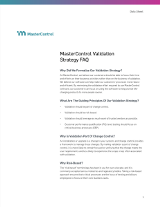
GxP Lifeline
The New Era of Food Safety Is Digital
The U.S. Food and Drug Administration (FDA) has digitization on the brain, and they’ve zeroed in on the food industry with what they’re calling a “New Era of Smarter Food Safety.”1 This new era involves a focus on food traceability, digital technologies and evolving food business models, which will be outlined in a “Blueprint for a New Era of Smarter Food Safety.” This Blueprint will be developed even as some companies are still implementing aspects of the Food Safety Modernization Act (FSMA). A new white paper discusses how this Blueprint will complement FSMA and how digitizing puts companies in a position to comply with both.
Food Traceability
The FDA’s hope is that more visibility into the food supply chain will make recalls less likely and faster when they do happen. Speeding up recalls is something the FDA has already done with other industries, and that same tracking technology can be used to trace food. Digitization expedites the tracing process, allowing companies to identify affected product faster than they can on manual systems. It also allows for more precise identification, which pinpoints affected products so that they can be removed while safe product continues to be sold.
Embracing digitization also makes it less likely that a company will have to recall a product. A key component of FSMA is a food safety plan. It’s easier to meet the plan requirements with standard operating procedures (SOPs) that are digitized and managed via an electronic quality management system (QMS). That way updates to SOPs can automatically send out training tasks to employees that need to be informed of the changes, which keeps everyone on the same page. Similarly, a QMS helps with corrective and preventive action (CAPA) by catching problems before they escalate and ensuring that any preventive policies are distributed and used company wide.
Digital Technologies
While the above digital technologies improve food safety, the FDA also plans to take advantage of distributed ledgers, sensors, artificial intelligence (AI) and the Internet of Things (IoT). Blockchain in particular would help with recalls, but also give consumers and regulators complete visibility into the supply chain. Some large food companies are already doing this to manage their global supply chains.
AI can help food companies with another part of FSMA — the food defense plan. FSMA requires that food companies protect their products from intentional adulteration. Robust food safety software helps with this, but heightened security is also required. This is where AI comes in. AI and machine learning are transforming video surveillance to the point of automating detection of suspicious objects or behaviors.2 This type of technology satisfies the requirements of FSMA, but also puts a food company in a position to meet new requirements that might be in the FDA’s Blueprint.
Evolving Food Business Models
The way consumers access food is changing, whether that’s in the form of Grubhub or ordering groceries online to be delivered right to their front doors. Trying to ensure food safety when the industry is continually evolving is difficult, but digitizing can help. A big concern with food transportation is making sure the temperature and cleanliness of the vehicle are within specifications. Smart food safety can help in this area with temperature sensors, remote monitoring and GPS tracking. The intended Blueprint from the FDA is light on details in this area, but the agency wants to build on existing technology to take new food business models into consideration.
Conclusion
The FDA’s Blueprint is in its infancy, but that’s no reason for food companies to procrastinate preparing for it. This is especially true where FSMA compliance will likely bring companies into alignment with the new Blueprint. Making the move to digitize makes sense not only from a compliance standpoint, but also serves to provide consumers with a better experience and gives food companies the ideal opportunity to stand out from their competition.
To learn more about the FDA’s Blueprint and how preparing can help food companies, download the free white paper here.
Sources:
- U.S. Food and Drug Administration. “Statement from Acting FDA Commissioner Ned Sharpless, M.D., and Deputy Commissioner Frank Yiannas on steps to usher the U.S. into a new era of smarter food safety.” April 30, 2019. https://www.fda.gov/news-events/press-announcements/statement-acting-fda-commissioner-ned-sharpless-md-and-deputy-commissioner-frank-yiannas-steps-usher
- Ashani, Zvika. “Deep Learning Algorithms Broaden The Scope Of Video Analytics.” https://www.securityinformed.com/insights/deep-learning-algorithms-broaden-scope-video-analytics-co-2214-ga.22684.html

